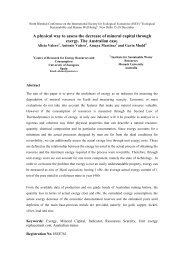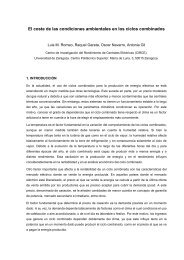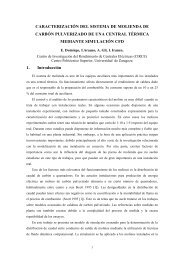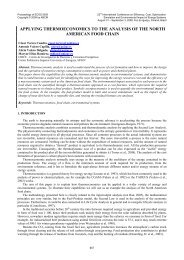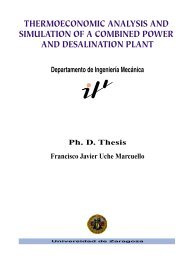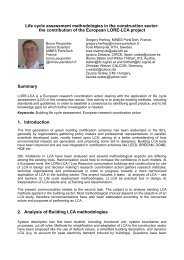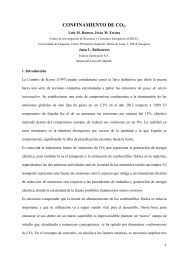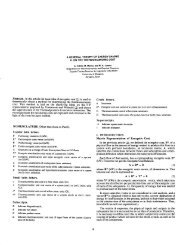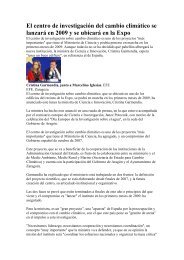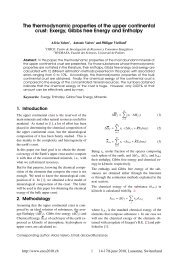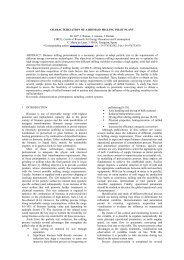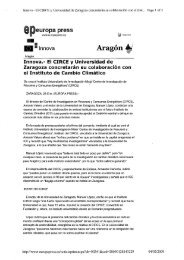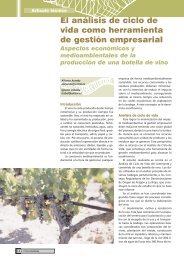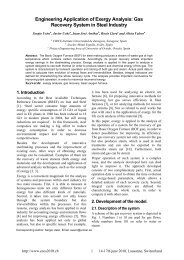Mejora de la Eficiencia en los Generadores Empleados en Parques ...
Mejora de la Eficiencia en los Generadores Empleados en Parques ...
Mejora de la Eficiencia en los Generadores Empleados en Parques ...
Create successful ePaper yourself
Turn your PDF publications into a flip-book with our unique Google optimized e-Paper software.
ABSTRACT<br />
This thesis introduces a new technique for effici<strong>en</strong>cy optimization of variable speed<br />
drives, with an emphasis on vector-controlled wind g<strong>en</strong>erators drives, working at<br />
partial speed and load. The technique combines two distinct control methods,<br />
namely, on-line search of the optimal operating point, with a machine mo<strong>de</strong>l based<br />
effici<strong>en</strong>cy control. For a giv<strong>en</strong> operating condition, characterized by a giv<strong>en</strong> turbine<br />
speed (ωT) and electric torque (Te), the search control is implem<strong>en</strong>ted via the<br />
“Ros<strong>en</strong>brock” method, which <strong>de</strong>termines the level of the flux curr<strong>en</strong>t compon<strong>en</strong>t that<br />
results in maximum output power. Once the optimal level of the flux curr<strong>en</strong>t<br />
compon<strong>en</strong>t is found, this information is used to update the rule base of an adaptive<br />
fuzzy controller, which p<strong>la</strong>ys the role of an implicit mathematical mo<strong>de</strong>l of the system.<br />
As the optimum points associated with the differ<strong>en</strong>t operating conditions are<br />
i<strong>de</strong>ntified, the rule base is progressively updated, so that the fuzzy controller learns to<br />
mo<strong>de</strong>l the optimal operating conditions for the <strong>en</strong>tire torque-speed p<strong>la</strong>ne. After every<br />
rule base update, the Ros<strong>en</strong>brock searcher output is reset, but it is kept active to<br />
track possible minor <strong>de</strong>viations from the optimum point. This way, the speed for an<br />
optimum point is guaranteed, as well as, the true optimum operation for any load<br />
condition. Once a transi<strong>en</strong>t condition is <strong>de</strong>tected, the higher torque requirem<strong>en</strong>t<br />
inher<strong>en</strong>tly forces the rule base output to a higher flux level, since the optimal<br />
condition for high torque is c<strong>los</strong>e to rated flux. If compared with other techniques<br />
proposed in the sci<strong>en</strong>tific literature, this method shows better performance, because,<br />
the output of fuzzy controller, provi<strong>de</strong> immediately the refer<strong>en</strong>ce of curr<strong>en</strong>t flux<br />
compon<strong>en</strong>t for a maximum effici<strong>en</strong>cy, for any operating point.



